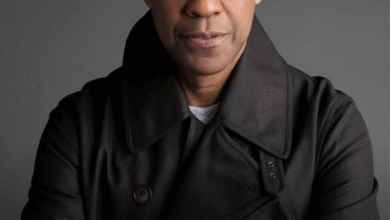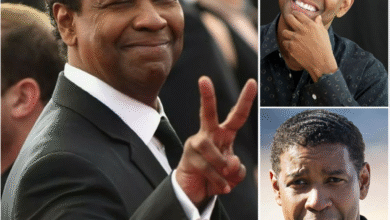How Mr. T and Sylvester Stallone’s Rocky III Fight Defined a Generation and Changed Hollywood Forever!
OPINION: This article may contain commentary which reflects the author's opinion.
The fight in Rocky III (1982) marks a pivotal moment in the Rocky franchise and in cinematic history. This dramatic showdown between Sylvester Stallone’s Rocky Balboa and Mr. T’s Clubber Lang not only redefined the hero-villain dynamic but also shaped the cultural landscape of the 1980s. The film, directed by Stallone himself, marked a critical turning point for the franchise, showcasing themes of perseverance, vulnerability, and redemption that would resonate with audiences for decades. This article delves into the significance of Rocky III, particularly the fight, and how both Stallone and Mr. T helped to shape a generation through their performances and cultural influence.
The Fight: Rocky’s Greatest Challenge
In Rocky III, the loss of Rocky Balboa’s heavyweight title to Clubber Lang stands as a landmark moment in the film series. It’s the first time that Rocky, the invincible underdog turned champion, faces defeat in the ring. This loss is not just about a title; it symbolizes Rocky’s vulnerability and sets the stage for his redemption arc. His fall from grace, followed by his regaining of confidence and determination with the help of Apollo Creed, speaks to universal themes of resilience and second chances.
The fight scenes, known for their intense choreography and emotionally charged moments, have become some of the most iconic in the series. The slow-motion shots, combined with the powerful soundtrack, particularly “Eye of the Tiger” by Survivor, amplify the drama, turning the fight into not just a physical battle, but a representation of the emotional and mental struggle Rocky must overcome. Rocky III is remembered for not just being a sports movie, but for introducing a hero who had to confront his own weaknesses to reclaim his strength.
Mr. T’s Impact: A New Archetype for Villains
Mr. T’s portrayal of Clubber Lang in Rocky III was a breakout role that made him a cultural icon. Lang was brash, powerful, and unapologetic—a villain unlike any other. His now-infamous catchphrase, “Prediction? Pain,” and his confident demeanor introduced a new archetype for villains in action films. Mr. T’s look—mohawk hairstyle, gold jewelry, and intimidating presence—became synonymous with 1980s tough-guy culture, influencing fashion trends and media representations of masculinity.
Beyond Rocky III, Mr. T’s influence only grew. His tough-guy persona became iconic, and his catchphrase “I pity the fool” entered the American lexicon, later inspiring the 2006 reality show I Pity the Fool. Mr. T also became a role model for children, notably in his role as a coach in the TV series Mister T (1983–85), where he provided moral lessons while maintaining his tough persona. His influence extended far beyond film, shaping the culture of the 1980s with his larger-than-life personality and public appearances.
Sylvester Stallone: The American Dream and Resilience
Sylvester Stallone’s role as Rocky Balboa in Rocky III solidified his place in Hollywood history. But it wasn’t just his portrayal of a boxer fighting for the championship; it was the way he embodied the American Dream and resilience. Stallone’s Rocky was a character who, despite all odds, kept fighting. His transformation from underdog to champion resonated deeply with viewers, particularly in the early 1980s when America was grappling with economic and social challenges.
Stallone’s impact was not limited to his performance. As the writer, director, and star of Rocky III, he shaped the film’s shift from gritty realism to a more stylized, epic narrative. This decision played a major role in making Rocky III a cultural phenomenon. The training montages, motivational speeches, and larger-than-life fight scenes became tropes that would influence countless sports and action films in the years to come.
Stallone’s physical transformation for the role was also monumental. He took his fitness to new heights, pushing his body to the limit and adding authenticity to Rocky’s journey. The image of Stallone’s shredded physique became iconic, further cementing his place in the action movie pantheon and influencing how action stars were perceived.
Cultural Legacy: Shaping the 1980s and Beyond
The combined efforts of Stallone and Mr. T in Rocky III left an indelible mark on the culture of the 1980s. The themes of redemption and overcoming adversity struck a chord during a time when many Americans were dealing with economic struggles and shifting societal norms. The Rocky franchise, with its emphasis on perseverance and the underdog’s triumph, became an anthem for resilience.
The iconic Rocky statue, which Stallone commissioned and placed at the Philadelphia Museum of Art, has become a symbol of that enduring legacy. Known as “The Rocky Steps,” these stairs are now a tourist destination and a reminder of the spirit of Rocky III—a spirit that resonates with anyone who has ever had to fight for something.
A Lasting Influence on Pop Culture
Together, Stallone and Mr. T helped to shape a generation that valued hard work, resilience, and toughness. Their roles in Rocky III set the stage for a new era of action films, where larger-than-life heroes and villains would face off in epic battles, both physical and emotional. The film’s commercial success, its cultural influence, and its lasting impact on the portrayal of both action heroes and villains in cinema are undeniable.
As time goes on, Rocky III remains a landmark film that continues to inspire new generations of viewers. Its themes of overcoming adversity and fighting for redemption have transcended the world of boxing, becoming universal ideals that still resonate today. Whether it’s the intense fight scenes, the memorable characters, or the unforgettable music, Rocky III stands as a testament to the power of cinema to shape culture and inspire generations.



